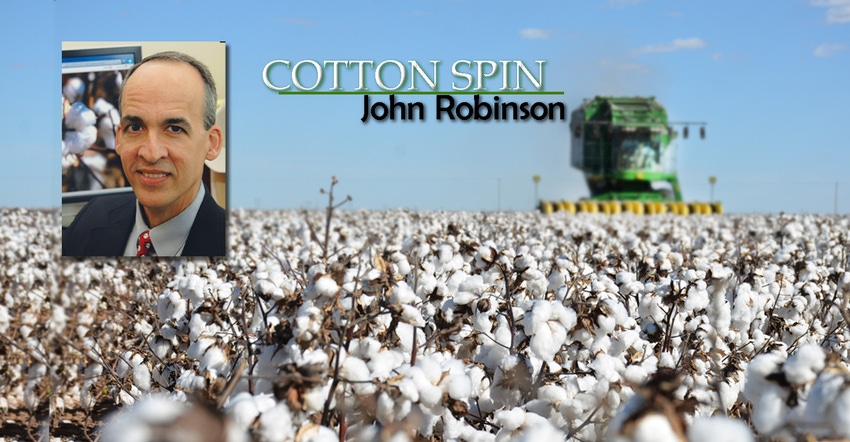
USDA’s September WASDE report contained mostly bullish month-over-month adjustments, but more so on the world stage. World beginning stocks were reduced 950,000 bales, mostly from decreases in China (-960,000) and Turkey (-900,000) which more than offset increases in the U.S. (+550,000) and Brazil (+500,000). This resulted from raising historical consumption numbers in China and Turkey, versus raising historical stocks levels in the U.S. and Brazil.
USDA cut world production a substantial 1.73 million bales, as a 550,000 bale increase in Brazil was swamped by decreases in the U.S. (-860,000), India (-500,000), West Africa (-400,000), the EU (-230,000) and Mexico (-180,000).
The trade variables were also cut month over month. World imports were decreased 610,000 bales, mostly in Bangladesh (-300,000), India (-200,000), and Vietnam (-100,000). World exports were raised in Brazil (+550,000) but more than offset by cuts in West Africa (-270,000), the U.S. (-200,000), India (-200,000), the EU (-180,000), Australia (-100,000), and Mexico (-100,000). World consumption was cut 1.06 million bales, mostly in India (-500,000), Bangladesh (-300,000), Mexico (-150,000) and Vietnam (-100,000).
The bottom line of all these adjustments was a 1.64 million bale decrease in world ending stocks, month over month. The direction and resulting level of the adjustment would be bullish according to history and economic theory.
The U.S. balance sheet was also tightened, but the bottom-line adjustment was modest due to a number of offsetting moves. For example, the adjustments to U.S. supply were mixed as the 860,000-bale cut in production was partially offset by the 550,000-bale increase in beginning stocks. The net 310,000-bale reduction in supply was then partially offset by the 200,000-bale reduction in U.S. exports. The latter would be expected from having fewer exportable supplies in addition greater export competition Brazil. Because of all the offsetting adjustments, the bottom line was only a 100,000-bale reduction in U.S. ending stocks, to 3.0 million bales. This month-over-month adjustment would be neutral in its size but perhaps modestly bullish in the resulting level.
It is quite likely that there will be more trimming of U.S. production as low-yielding stands of dryland cotton are zeroed out by crop insurance adjusters. However, with the anticipatory cuts already made, as well as the likely offsetting cuts to U.S. exports, there may not be significant adjustments to ending stocks. Further, the market is probably expecting the small U.S. crop to get a little smaller. Hence, the “supply surprise” opportunity for a rally in ICE futures is probably fading.
For additional thoughts on these and other cotton marketing topics, please visit my weekly on-line newsletter at http://agrilife.org/cottonmarketing/.
About the Author(s)
You May Also Like




